Overview
We've set up our entity definitions, but how exactly does the router use these entities?
In this lesson, we will:
- Learn how the router uses entities and the query plan to connect data from multiple subgraphs
- Learn how entity representations and reference resolvers work together
Let's look at an example query
Let's say the client makes a request for our app's latest reviews. In their query, they'll request the id, comment, and rating for each review, along with the name of each review's location.
query GetLatestReviews {latestReviews {idcommentratinglocation {name}}}
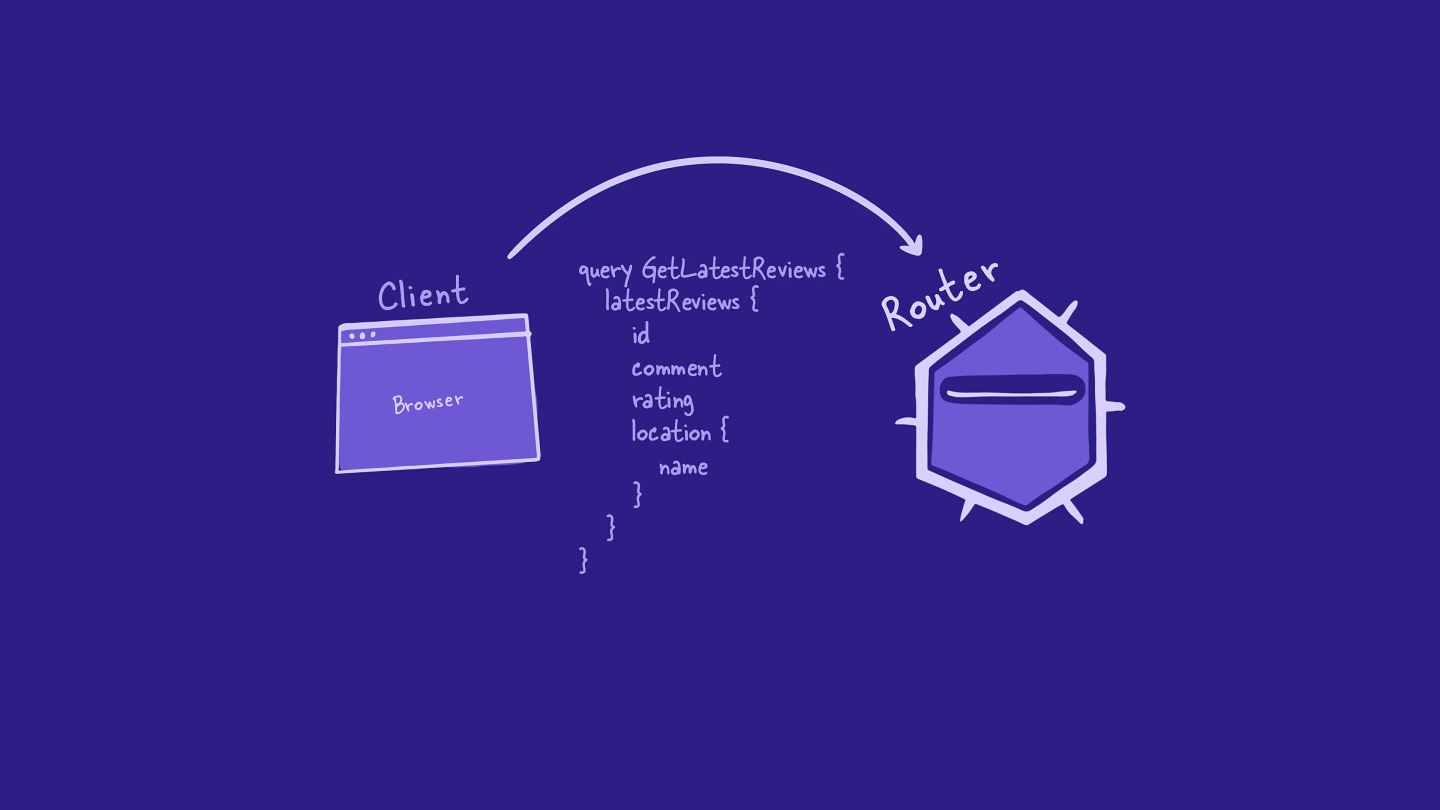
Now it's the router's time to shine!
Step 1: Building the query plan
Like we saw earlier, the router begins by building a query plan that indicates which requests to send to which subgraphs.
The router starts with the incoming query's top-level field, latestReviews. With the help of the supergraph schema, the router sees that latestReviews is defined in the reviews subgraph.
So the router starts the query plan with a request to the reviews subgraph.
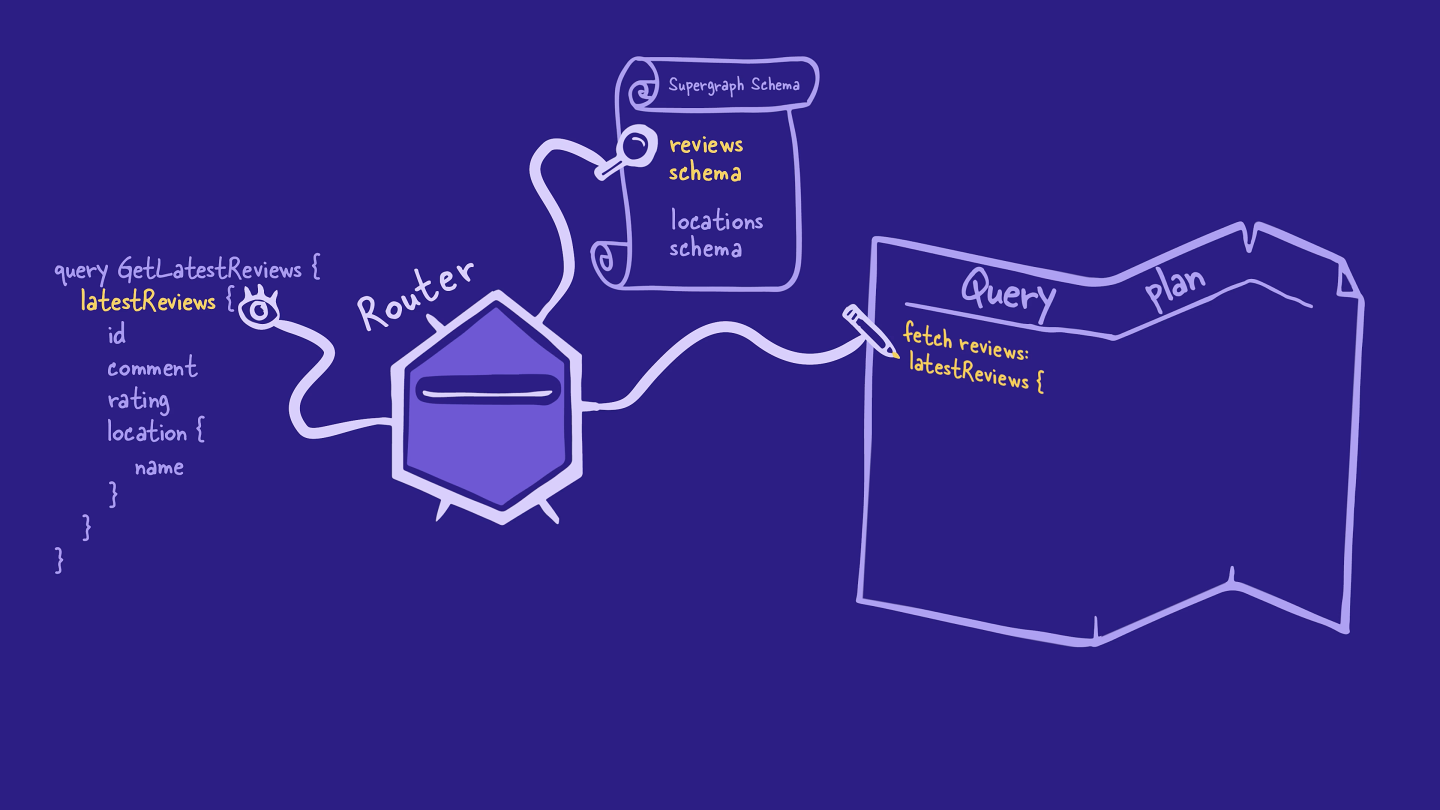
The router continues like this for a while, checking each field in the query against the supergraph schema, and adding it to the query plan. The fields for id, comment, rating and location all belong to the reviews subgraph.
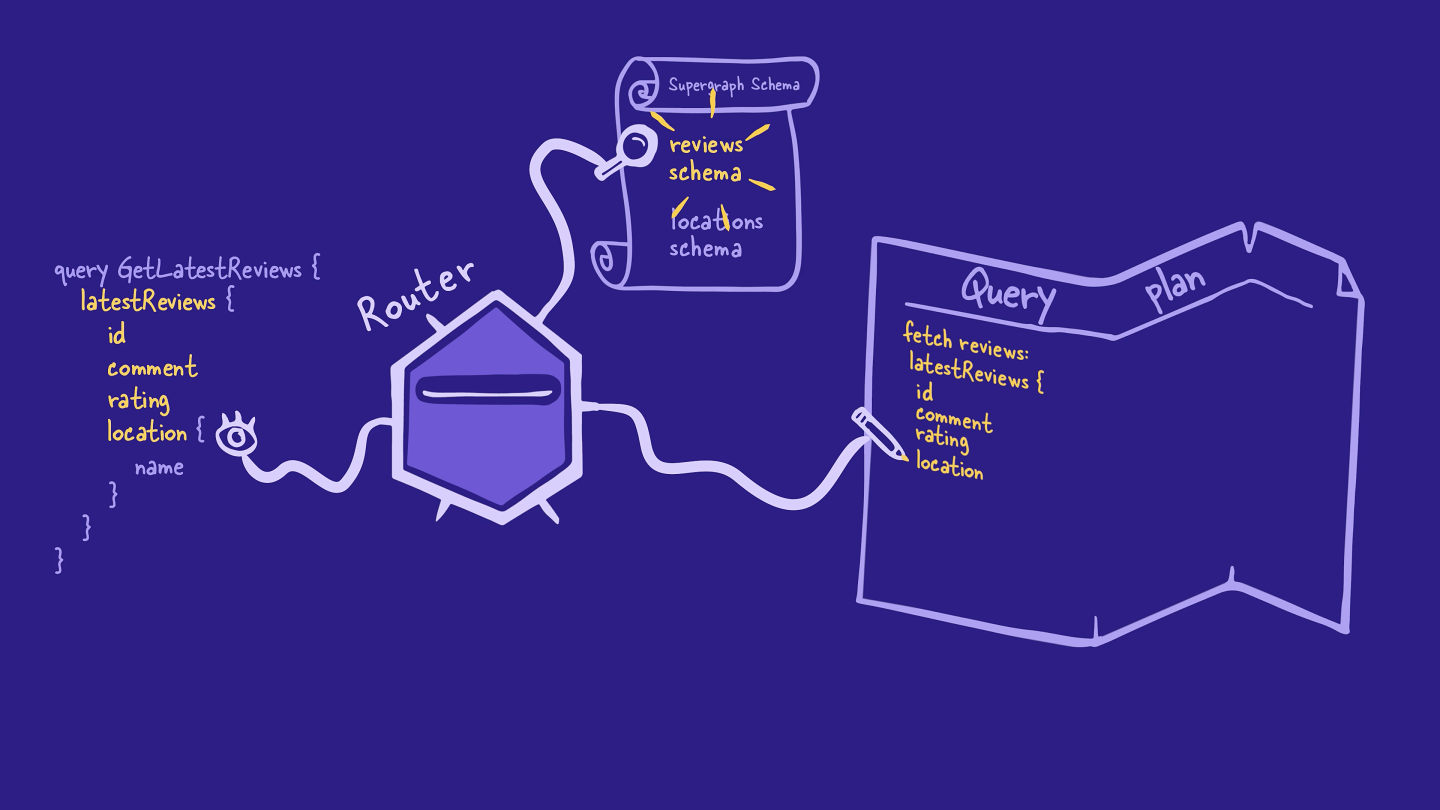
But when the router reaches the name field for a particular Location, it sees from the supergraph schema that Location.name can only be resolved by the locations subgraph (because that's where the Location.name field is defined).
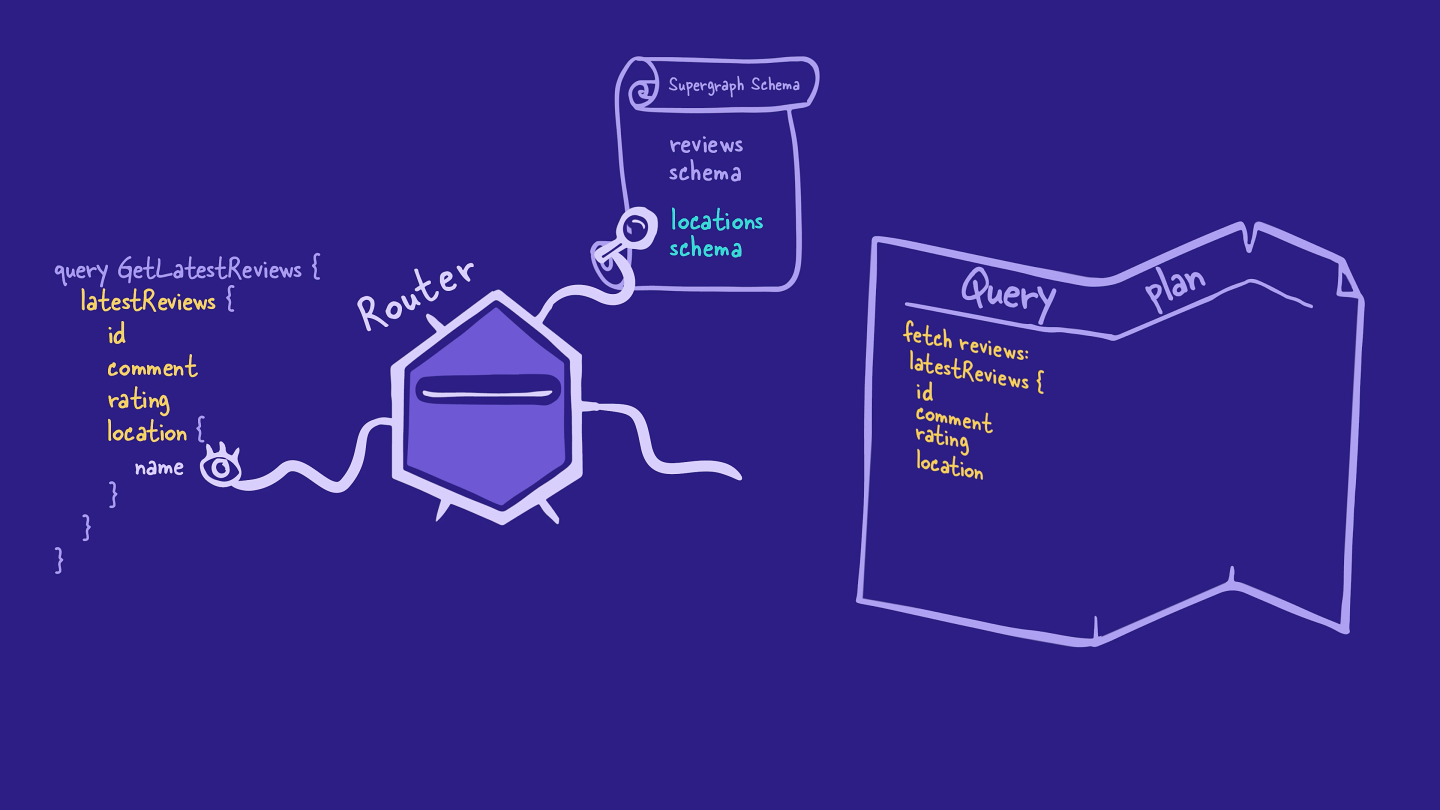
That means the router is going to have to connect data between subgraphs.
To do this, the router needs some more information from the reviews subgraph: the entity representation for each review's corresponding Location object.
Remember that entity representations are what the router uses to track a specific object between subgraphs. To make an entity representation for a Location object, the router needs the location's typename and its primary key (which in this case is the id field).
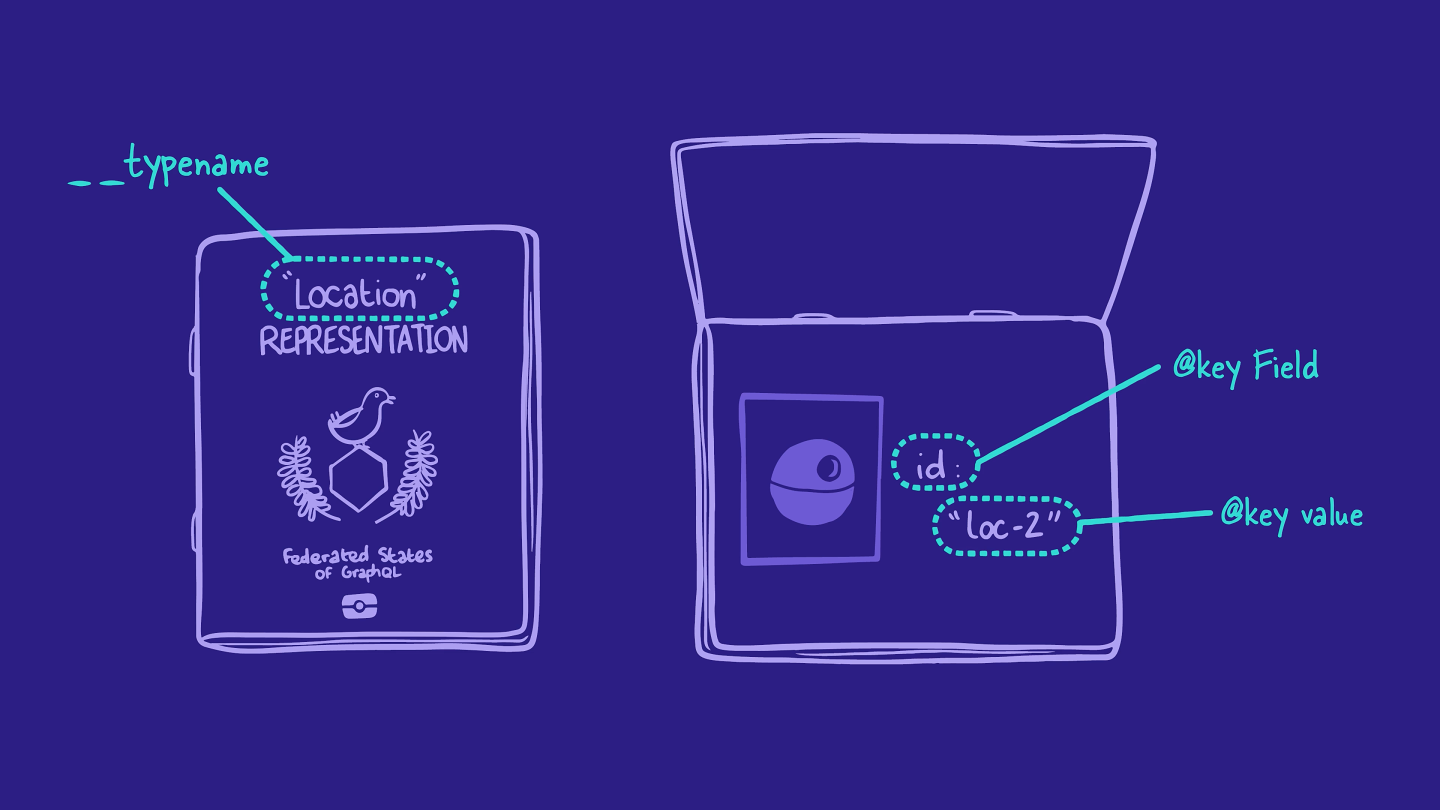
The router can get both these fields from the reviews subgraph.
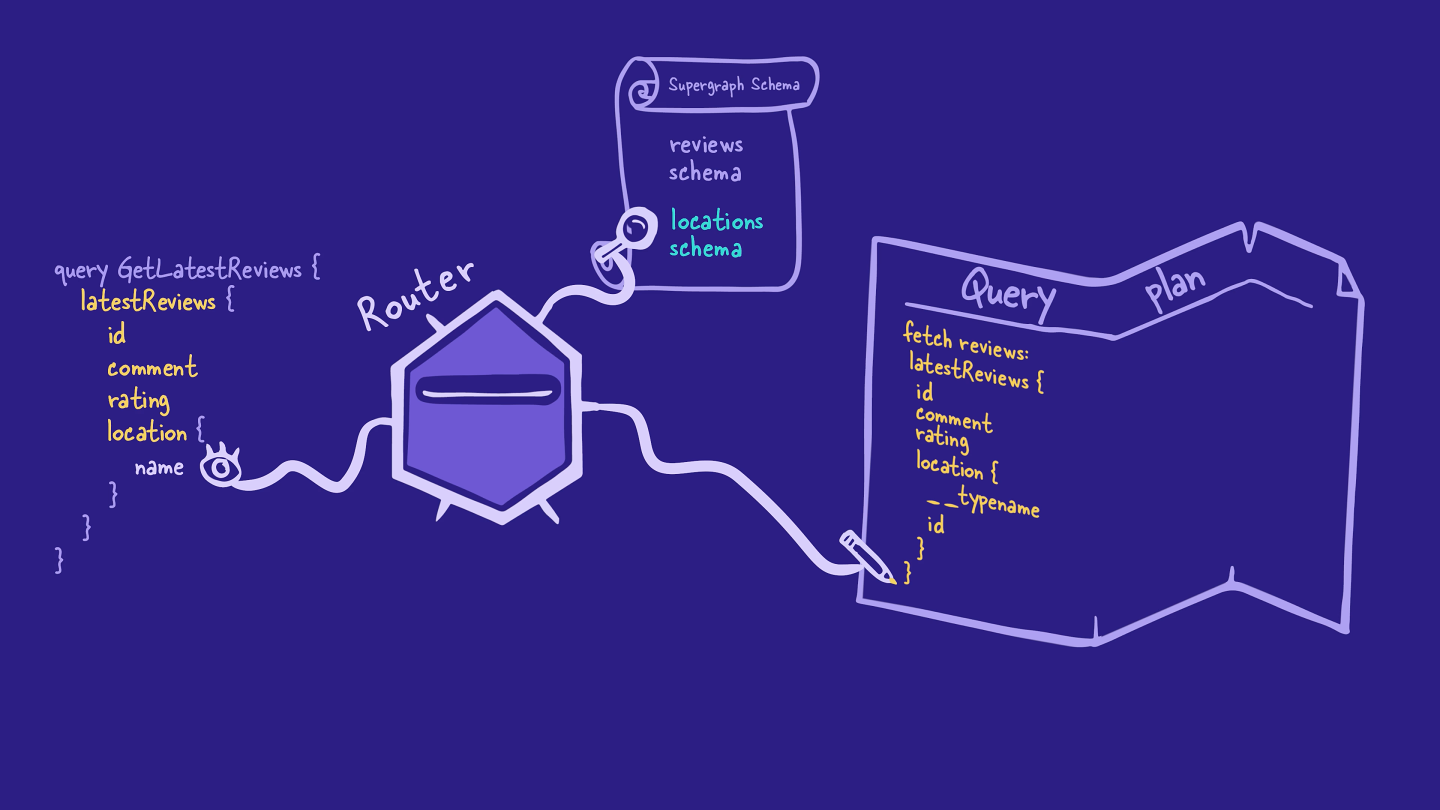
From there, the router adds another operation to its query plan to request the location's name from the locations subgraph.
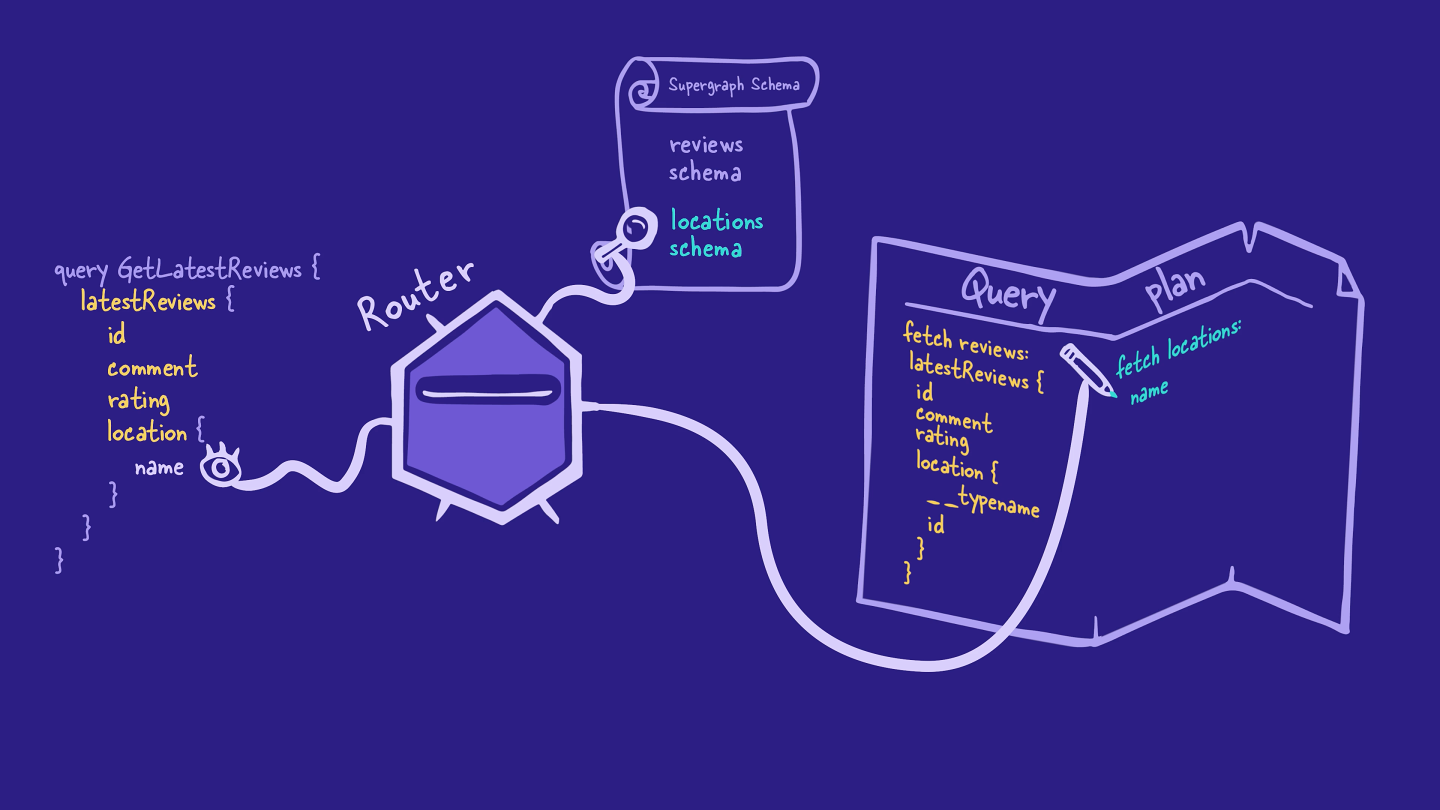
With that, all the fields in the query have been accounted for in the query plan. It's time to move on to the next step: executing the plan.
Step 2: Querying the reviews subgraph
The router begins by requesting data from the reviews subgraph.
The reviews subgraph resolves all the requested fields as it normally would, including the entity representations for all the requested location objects.
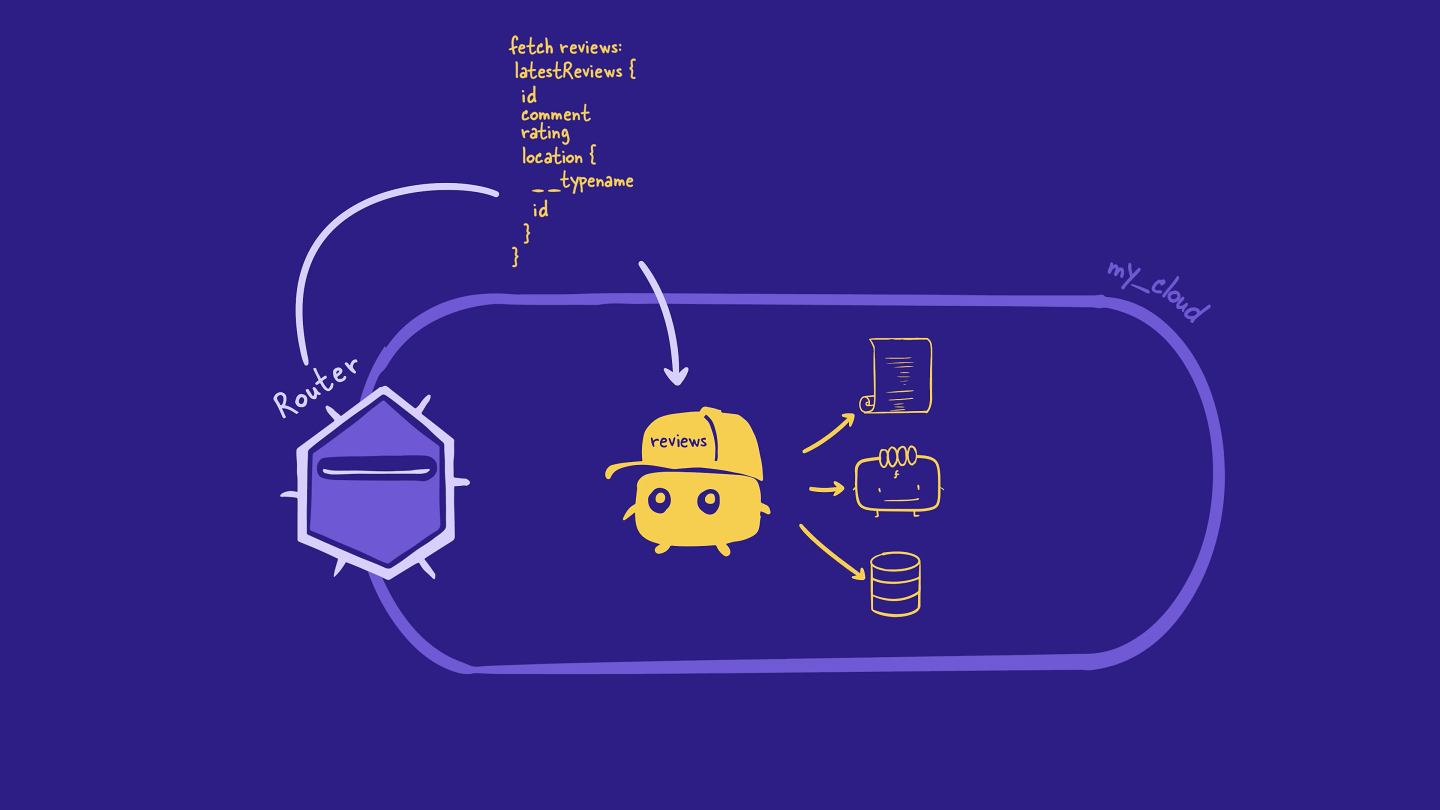
This subgraph doesn't know that the router plans to do anything special with the location's id or typename. It just sends back the data to the router like it was asked.
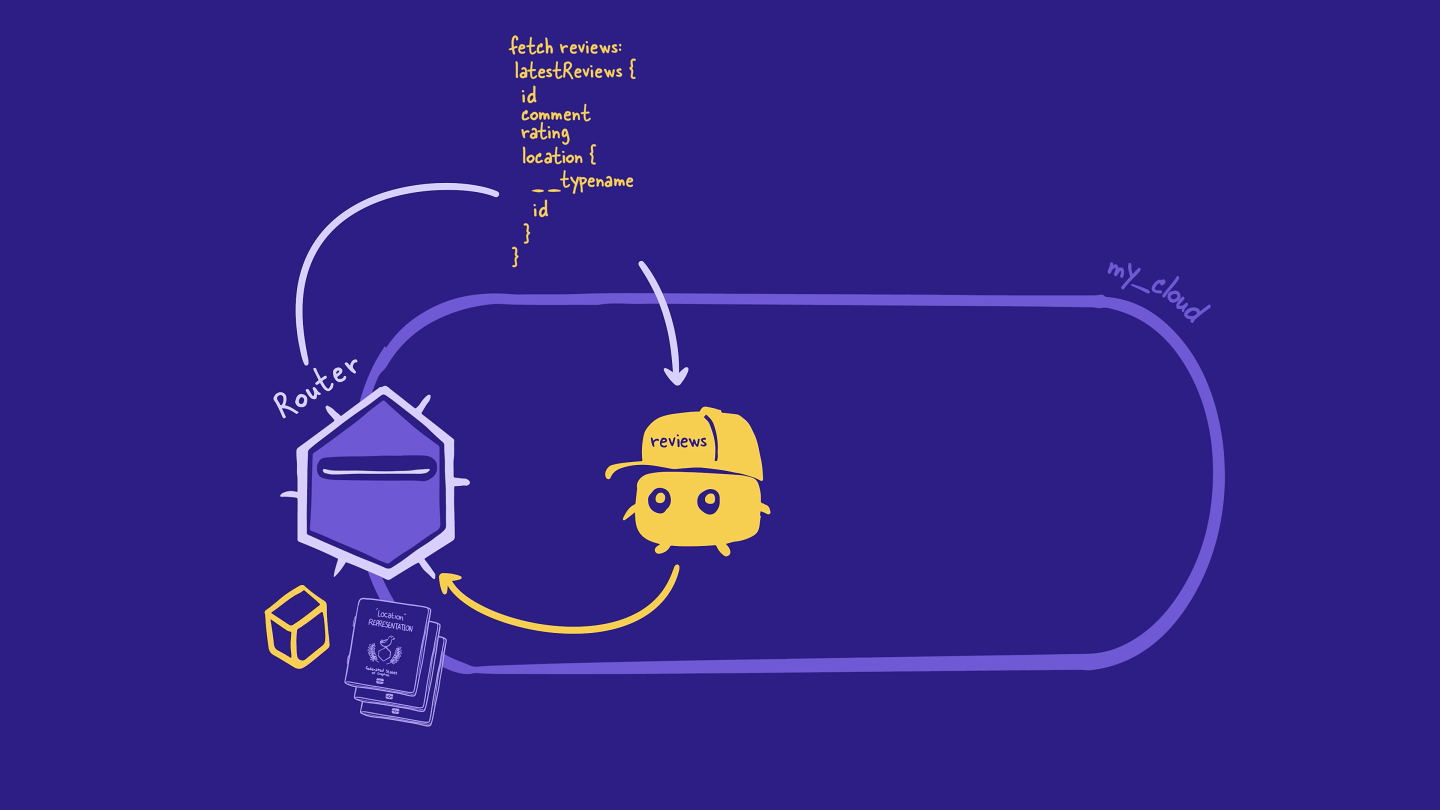
With that, the router's taken care of the first part of the query plan! The next step is to retrieve the name field from the locations subgraph.
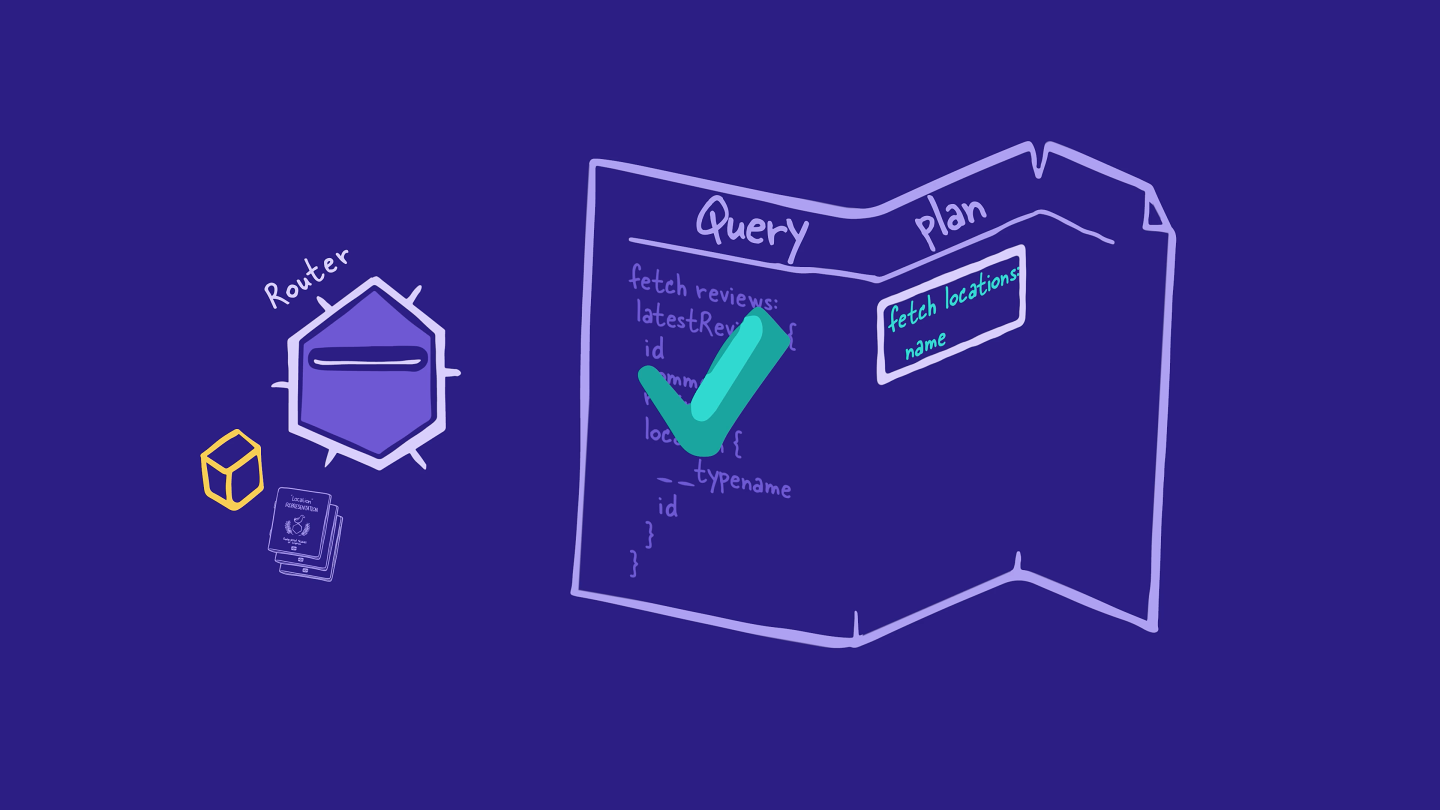
Step 3: Querying the locations subgraph
Remember the _entities field that showed up in our subgraph after we first defined an entity? This is where it comes back into the story!
The router builds a request using the _entities field.
This field takes in an argument called representations, which takes in, well, a list of entity representations! This is where the entity representations that the router received from the reviews subgraph will go.
In the same request, the router adds the rest of the fields left in the query plan (in this case, the location's name).
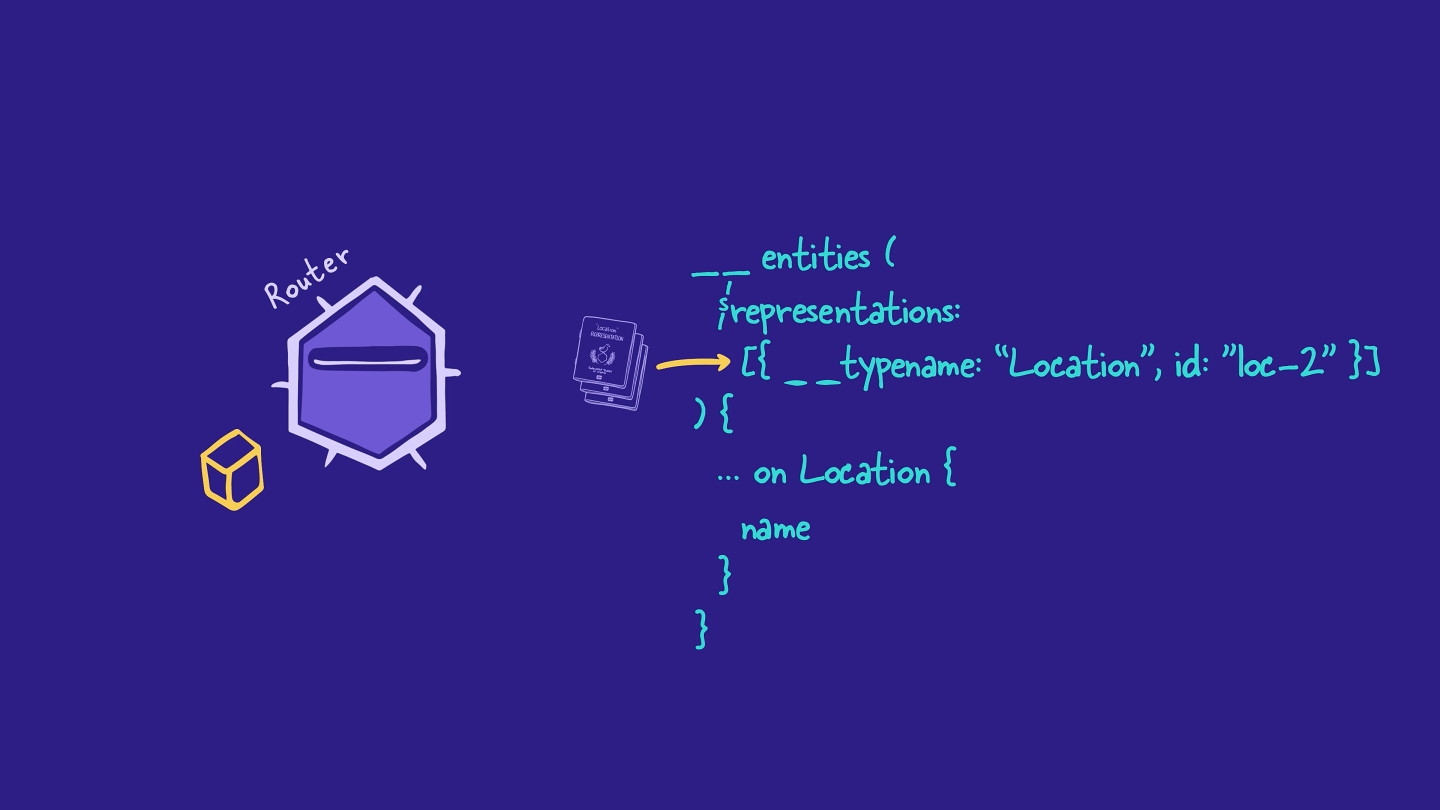
The router sends this request to the location's subgraph.
To resolve the _entities field, the locations subgraph uses its reference resolver. Remember this is a special resolver function used to return all the entity fields that this subgraph contributes.
The locations subgraph looks at the __typename value of each reference object to determine which entity's reference resolver to use. In this case, because typename is "Location", the locations subgraph knows to use the Location entity's reference resolver.
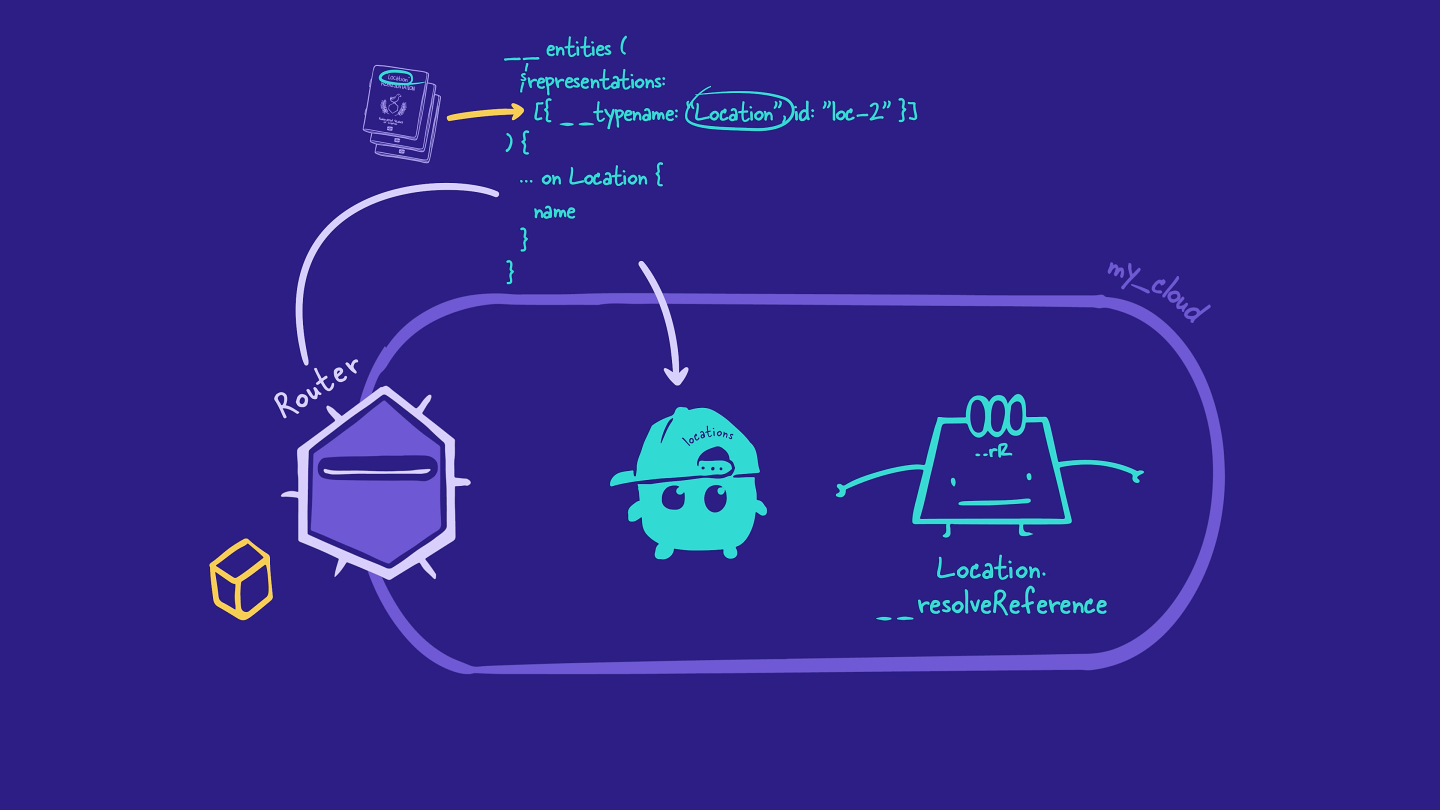
The Location reference resolver runs once for each entity representation in the query. Each time, it uses the entity representation's primary key to return the corresponding Location object.
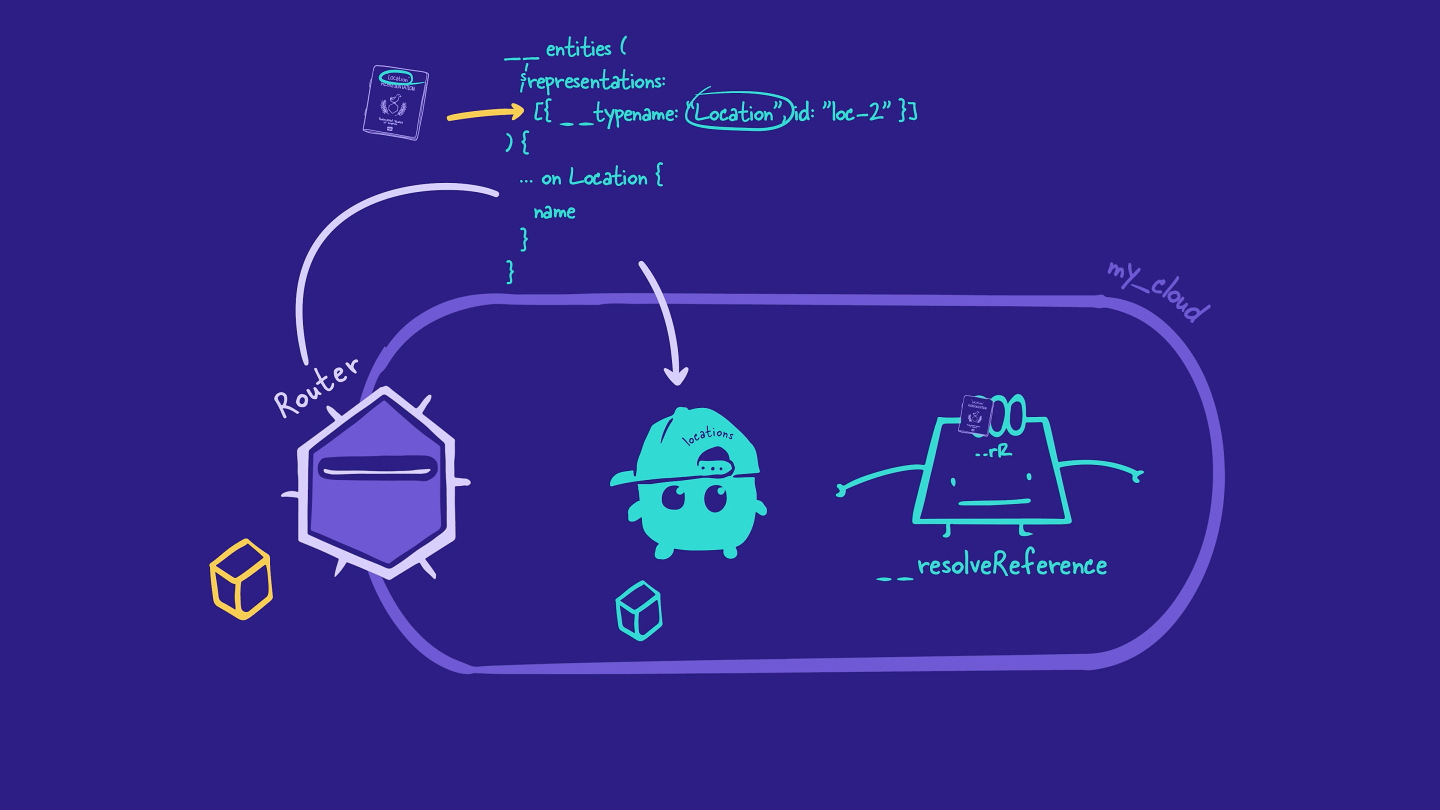
After the locations subgraph finishes resolving the request, it sends the data back to the router.
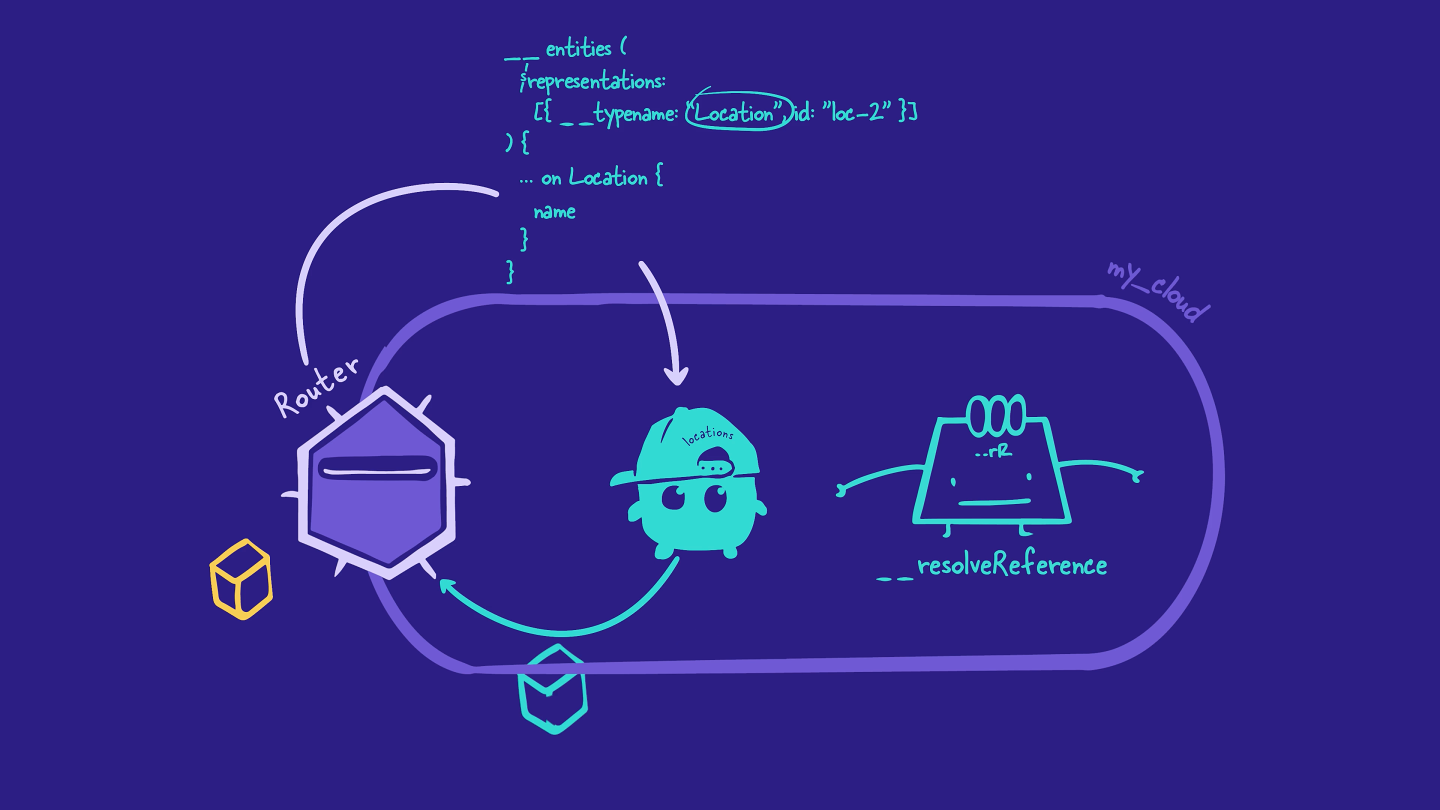
That's it for the executing phase!
Step 4: Sending the final response to the client
Now, the router combines all the data it received from the reviews and locations subgraphs into a single JSON object. And at last, the router sends the final object back to the client.

Practice
Key takeaways
- When the router needs to query for fields from a different subgraph, it also asks for entity representations from the current subgraph it's querying. These representations will be used in the subsequent operation's
_entitiesfield, set as the value for therepresentationsargument. - The reference resolver takes each representation and returns the matching data for its requested fields.
Up next
Now we know exactly what is happening in a router's query plan and how the pieces fit together! In the next lesson, we'll dive into the code and start with referencing an entity from a subgraph.
Share your questions and comments about this lesson
Your feedback helps us improve! If you're stuck or confused, let us know and we'll help you out. All comments are public and must follow the Apollo Code of Conduct. Note that comments that have been resolved or addressed may be removed.
You'll need a GitHub account to post below. Don't have one? Post in our Odyssey forum instead.